Author: Greg Foster
After a long period of initial skepticism, I’m finally comfortable admitting I’m fully aboard hazy IPA train. The once incredibly rare style has become much easier to find here on the west coast, so I’ve been able to taste enough of the brews to determine that yes, they are quite often delicious. Unfortunately, that’s about the only conclusive statement I can make about the style. I’ve heard plenty of anecdotal information about what makes NEIPA so special, but very little of it has been supported by hard evidence. Is it the hops, yeast, water profile, oats, or some magical combination of them all that produces the “juicy” quality modern hop-heads crave?
One of the more common recommendations those looking to achieve maximum juiciness receive is to introduce the dry hop addition at high kräusen, which is said to unlock the full potential of hop oils via a process referred to as “biotransformation.” While the results of our recent xBmt on the topic demonstrated it had an impact on appearance, tasters couldn’t reliably tell a beer dry hopped at high kräusen apart from one dry hopped once fermentation had died down. I don’t necessarily question whether biotransformation occurs in the brewing scenario, though I’m admittedly skeptical of the strong impact some claim it has on beer.
After publishing those results, we received suggestions from readers to take this variable to the extreme by comparing a standard dry hopped beer to one where the dry hops went along for the entire fermentation ride, being added at yeast pitch. I’ve never done such a thing and began to wonder if the additional contact time during active fermentation might encourage more juice inducing biotransformation to occur or maybe even have some other impact on the character of a NEIPA.
| PURPOSE |
To evaluate the differences between a NEIPA dry hopped at the beginning of fermentation and the same beer dry hopped toward the end of fermentation.
| METHODS |
I designed a NEIPA with a simple grain bill to showcase any contributions from the different dry hop additions.
Too Early, Too Late NEIPA
Recipe Details
| Batch Size | Boil Time | IBU | SRM | Est. OG | Est. FG | ABV |
|---|---|---|---|---|---|---|
| 20.8 L | 60 min | 54.3 IBUs | 3.6 SRM | 1.056 | 1.015 | 5.4 % |
| Actuals | 1.056 | 1.008 | 6.3 % | |||
Fermentables
| Name | Amount | % |
|---|---|---|
| Pale Malt (2 Row) US | 4.536 kg | 85.11 |
| Oats, Flaked | 793.8 g | 14.89 |
Hops
| Name | Amount | Time | Use | Form | Alpha % |
|---|---|---|---|---|---|
| Yakima Valley Hops Extract | 5 g | 60 min | Boil | Pellet | 61 |
| Citra | 14 g | 10 min | Boil | Pellet | 12 |
| Simcoe | 14 g | 10 min | Boil | Pellet | 13 |
| Centennial | 35 g | 4 days | Dry Hop | Pellet | 10 |
| Citra | 35 g | 4 days | Dry Hop | Pellet | 12 |
| Galaxy | 35 g | 4 days | Dry Hop | Pellet | 14 |
| Simcoe | 35 g | 4 days | Dry Hop | Pellet | 13 |
Yeast
| Name | Lab | Attenuation | Temperature |
|---|---|---|---|
| London Ale III (1318) | Wyeast Labs | 73% | 17.78°C - 23.33°C |
Notes
| Water Profile: Ca 106 | Mg 0 | Na 0 | CL 102 | SO4 118 |
Download
| Download this recipe's BeerXML file |
The morning of my brew day, I spun up a large starter Wyeast 1318 London Ale III yeast, a strain I’ve successfully induced a milkshake-like haze with in the past.
Six hours later, I got back to work by weighing out and milling my incredibly simple grain bill.
As my brewing water was heating to strike temperature, I added minerals and acid to achieve my target profile.
Once the water had reached strike temperature, I mashed in, gave it a good stir, and turned on the RIMS to re-circulate for 60 minutes before confirming the mash was resting at my desired temperature.
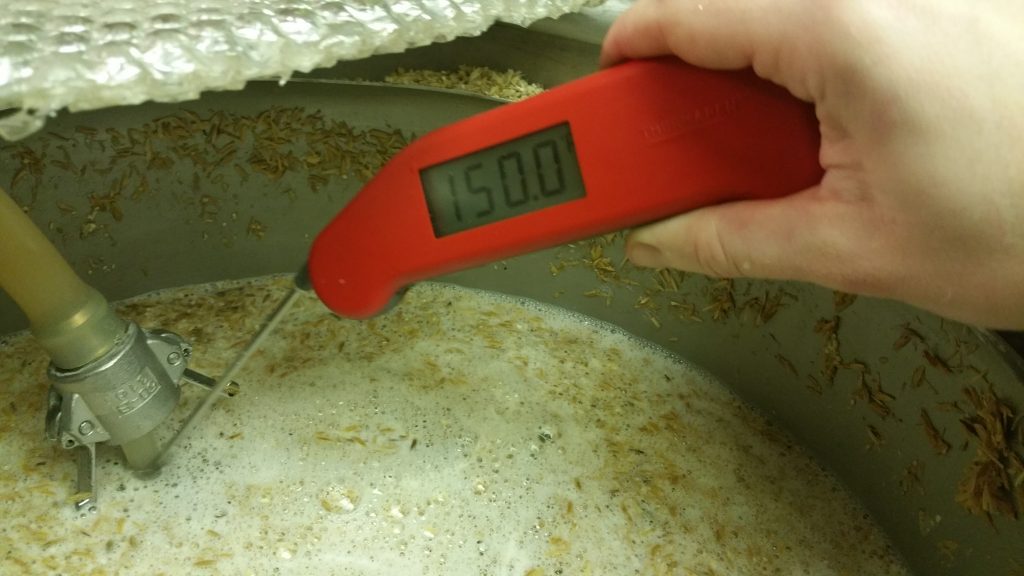
Following the 60 minute mash, I transferred the sweet wort to my electric kettle, performed a routine batch sparge to reach pre-boil volume, then turned on the heat. Once boiling, I added a measured dose of hop extract for bittering.
The wort was boiled for an hour with hops and whirlfloc added per the recipe. I then ran the wort through my counterflow chiller into separate fermentation kegs, each receiving an identical 4 gallons. At this point, my kitchen could only be properly be described as a giant mess.
In order to avoid clogs during later transfers, I covered the dip tubes in each fermentor with a stainless mesh hop blocker.
I proceeded to pitch the yeast, each batch receiving half of the starter I’d made earlier in the day. With wort now officially beer, it was time to introduce the xBmt variable. I measured out two equal quantities of the same hops and immediately added half to a just pitched beer.
I then vacuum sealed the other dry hop charge and placed them in my freezer to reduce the chances oxidation. The beers fermented next to each other in my chamber controlled to 65°F/18°C, signs of activity present the following day. When I returned to check on the beers 4 days later, fermentation had slowed to a crawl in both, indicating it was time to add the dry hop charge to the other batch. Once again attempting to reduce oxygen as much as possible, I purged the bag of hops with CO2 before hastily opening the keg and adding them to the beer.
My fear of oxidation further compelled me to purge the headspace of both kegs with CO2… 10 times. I then turned up my chamber temperature to 70°F/21°C and left the beers for a week before confirming FG was reached in both.
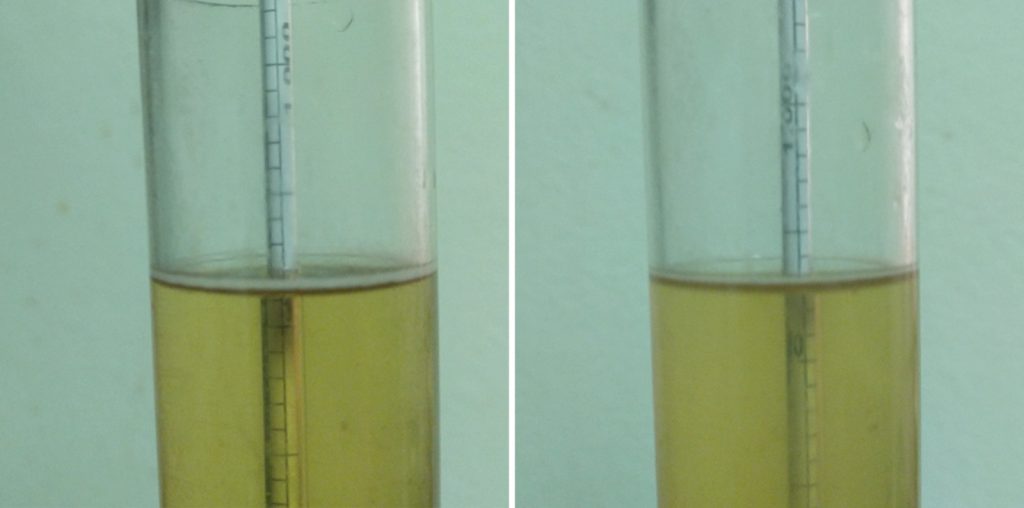
After a couple days of cold crashing, I pressure transferred the beers into separate sanitized serving kegs.
The beers were fined with gelatin, which I added to each keg, and burst carbonated before being set to serving pressure to condition for a few more days. Samples pulled a few days later revealed beers of similar haze with neither possessing quite the milkshake look I was expecting. Curiously, after a 3 weeks in the keg, once data collection was complete, the beer dry hopped at yeast pitch was considerably clearer than the standard dry hop batch.
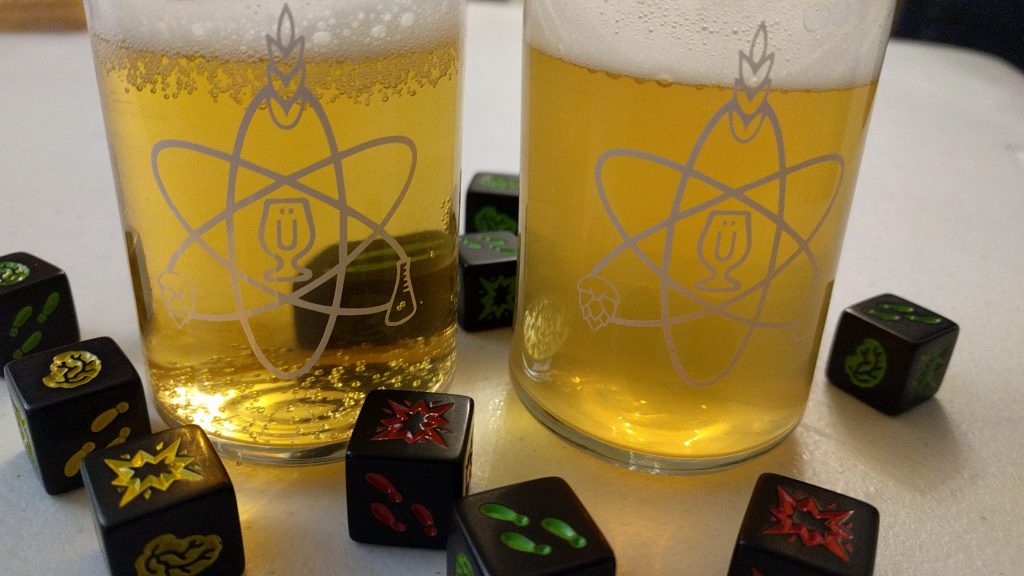
| RESULTS |
A total of 16 people with varying levels of experience participated in this xBmt while attending a Pacific Gravity Brewing Club meeting at Los Angeles Ale Works.
Each participant was served 1 sample of the beer dry hopped at yeast pitch and 2 samples of the standard dry hop beer then asked to identify the sample that was unique. Given the sample size, 11 tasters (p<0.05) would have had to correctly identify the beer as being different in order to reach statistical significance. In the end, only 6 participants (p=0.65) accurately identified the unique sample, indicating participants in this xBmt were unable to reliably distinguish a beer where the dry hop charge was in contact throughout the duration of fermentation from the same beer where the dry hop charge was added toward the end of fermentation.
My Impressions: In between testing Pacific Gravity club members, I triangle tested myself once and chose incorrectly. In my opinion the beers tasted identical and I was just randomly guessing. A month later when one of the beers cleared up, I tested myself again. I attempted a “blind” side by side. I thought I could detect one of the beers tasting smoother and cleaner. I surmised my choice would be clear beer, but I discovered I was wrong. I then tried to triangle test myself one more time and was wrong once again. I just couldn’t tell these beers apart. As for the recipe, I’m not sure if it could be called a proper NEIPA due to the minimal haze, but it sure is tasty nonetheless.
| DISCUSSION |
The point at which dry hops should be added to beer has been a topic of debate among brewers for as long as I’ve been in the hobby, though it seems to have become even more of a focus with the rising popularity of NEIPA. Having previously embraced the method of adding dry hops toward the end of fermentation, for reasons admittedly unknown other than it’s what I’ve heard is “best,” I was pretty surprised participants in this xBmt couldn’t reliably distinguish a beer dry hopped at yeast pitch from a standard dry hop beer. While this did little to fulfill my hopes of unraveling some of the mysteries behind NEIPA, I was stumped by some of the observations I made throughout the process.
Most shocking to me was the difference in clarity between the beers in this xBmt, not so much that they were different, but rather the fact the beer dry hopped at yeast pitch ended up clearing quite a bit more than the standard dry hop beer. Given the results of the recent biotransformation xBmt where the beer dry hopped at high krausen maintained more haze than a standard dry hopped beer, I’m left asking if perhaps there is something to the timing of dry hop additions, at least when it comes to appearance. Also, might it be possible that actual biotransformation, subtle as its impact may be, occurs more readily when hops are added at high krausen as opposed to the beginning or end of fermentation? So many questions!
Based on results of our collaborative xBmt on gelatin fining a NEIPA, I was confident it wouldn’t have much of an impact on clarity or flavor, which appears to have been the case only for standard dry hop beer… which is odd because I’ve made plenty of bright IPA using essentially the same exact methods, the only real difference being yeast strain and flaked oats. Still, I’m fascinated by whatever it is about hops being added prior to active fermentation that would lead to better clarification properties and look forward to ongoing exploration of this mysterious new style!
If you have any thoughts about this xBmt, please do not hesitate to share in the comments section below!
Brülosophy Merch Available Now!
Follow Brülosophy on:
FACEBOOK | TWITTER | INSTAGRAM
If you enjoy this stuff and feel compelled to support Brulosophy.com, please check out the Support page for details on how you can very easily do so. Thanks!

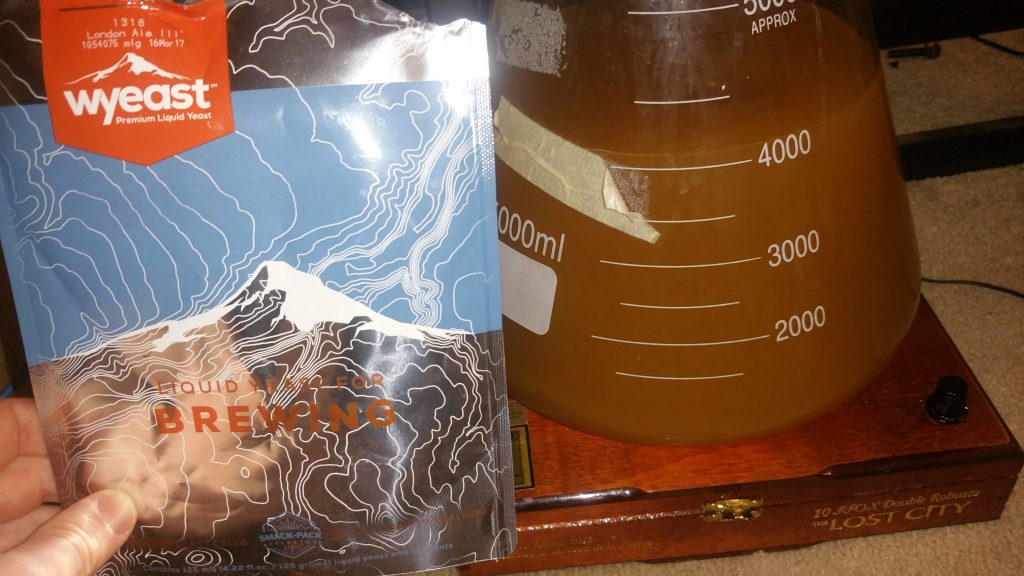
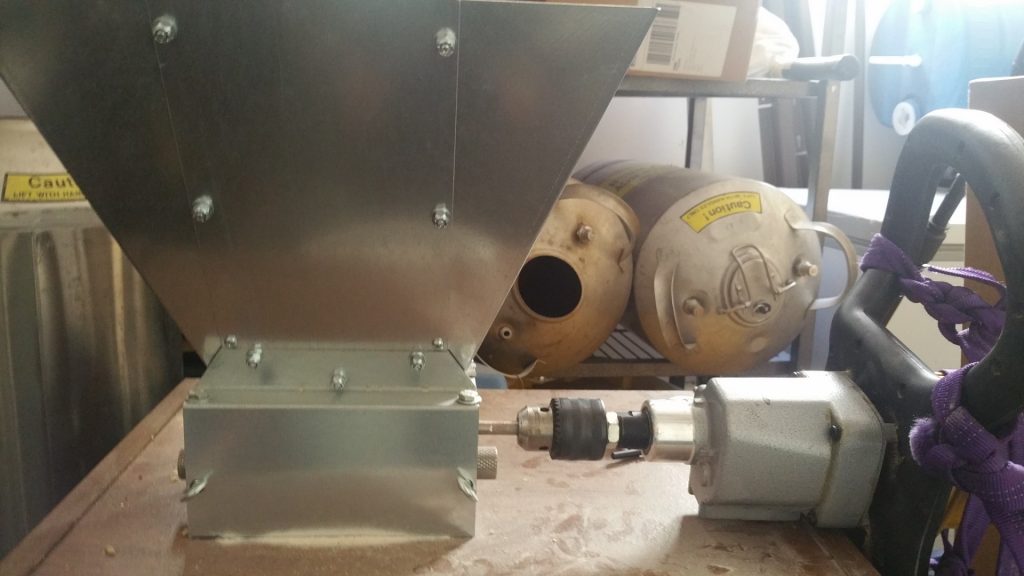
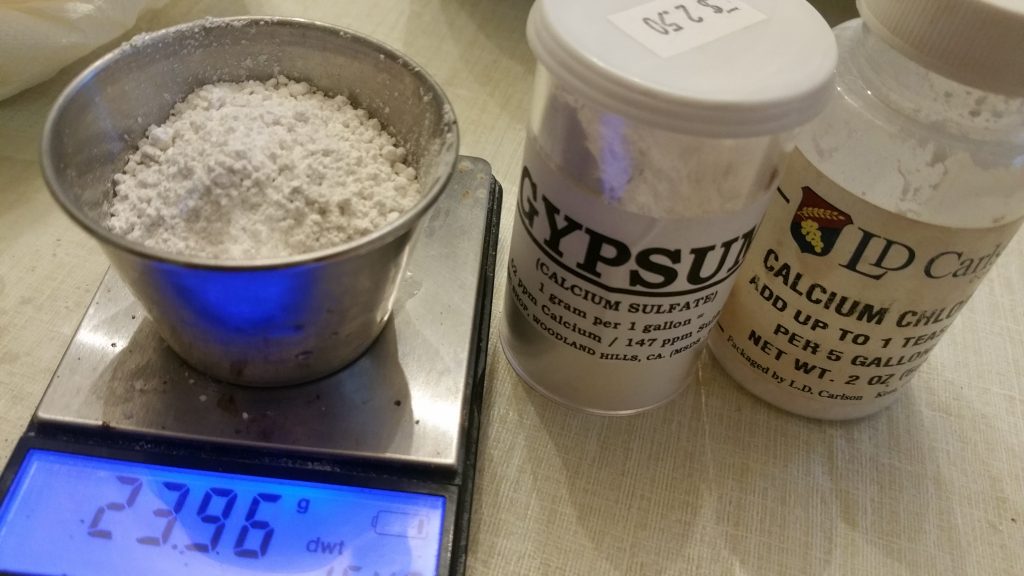
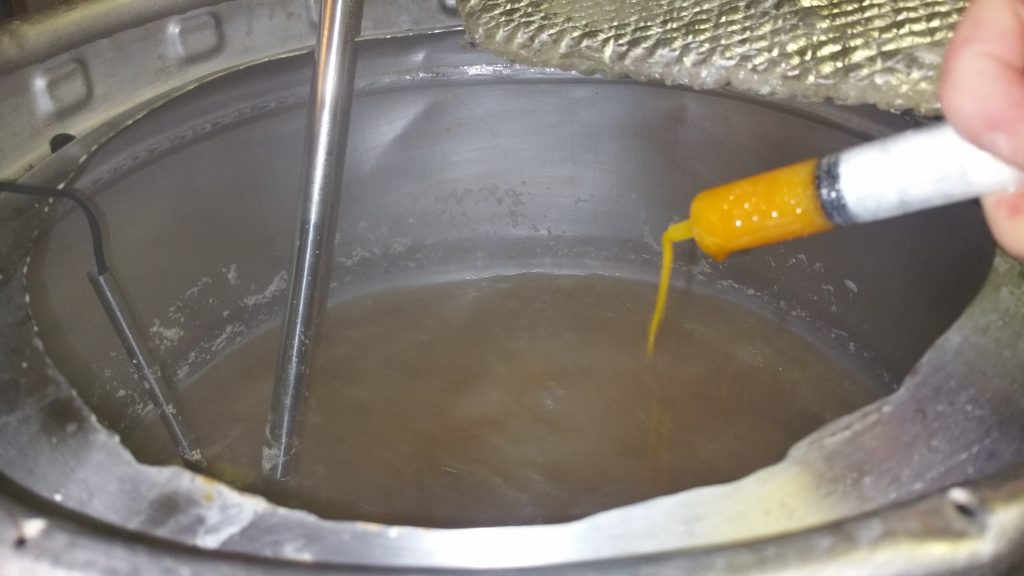
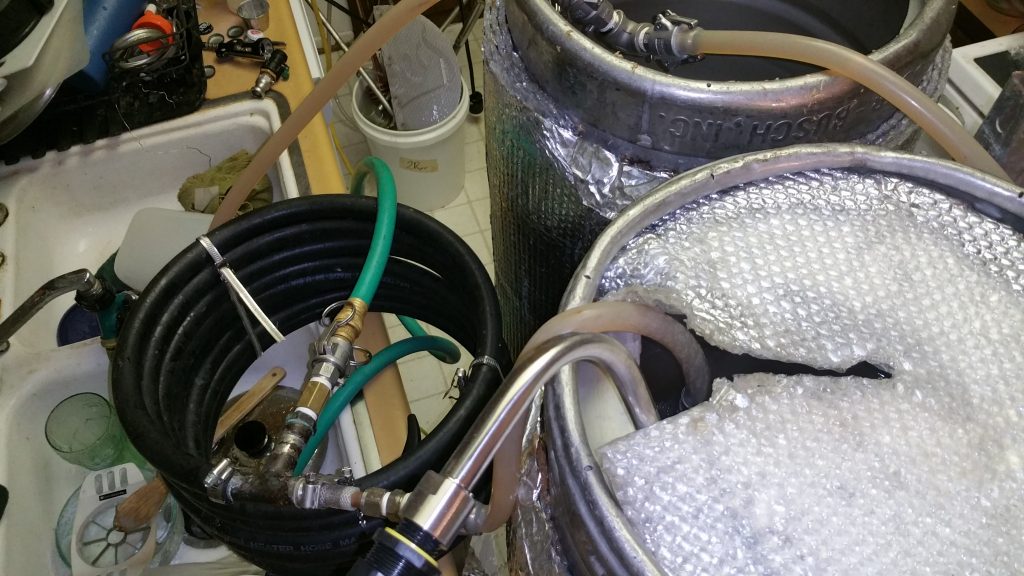
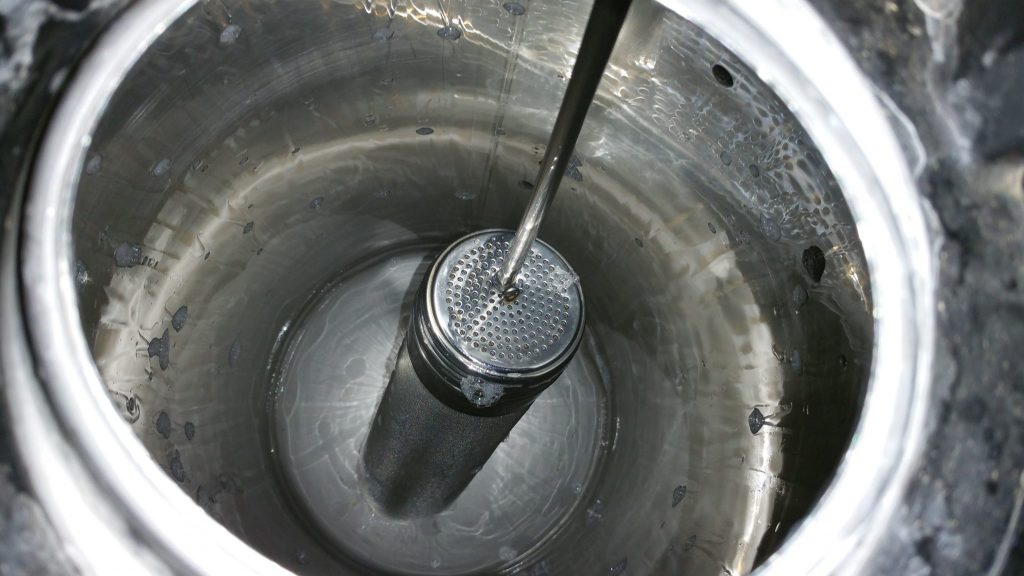
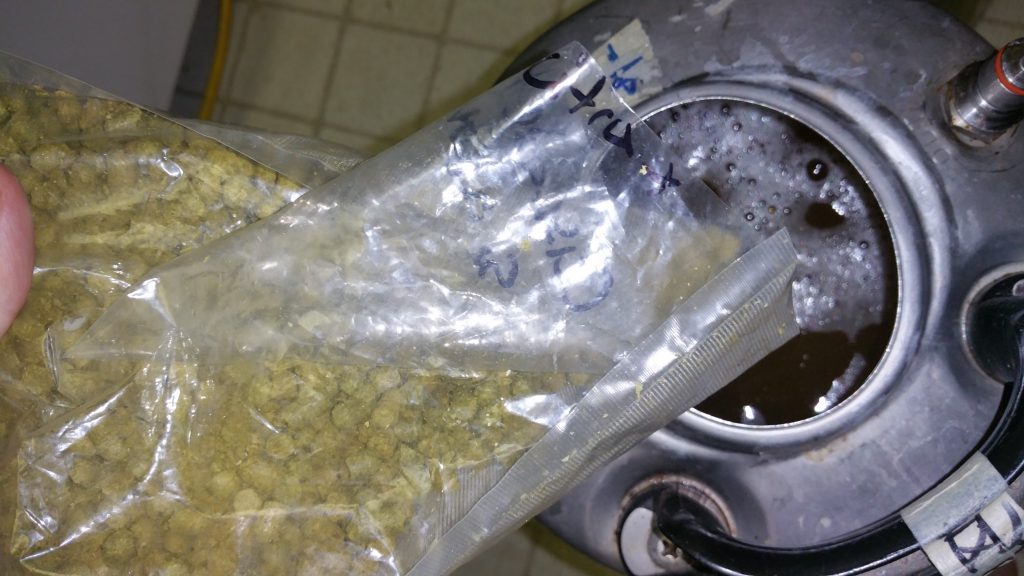
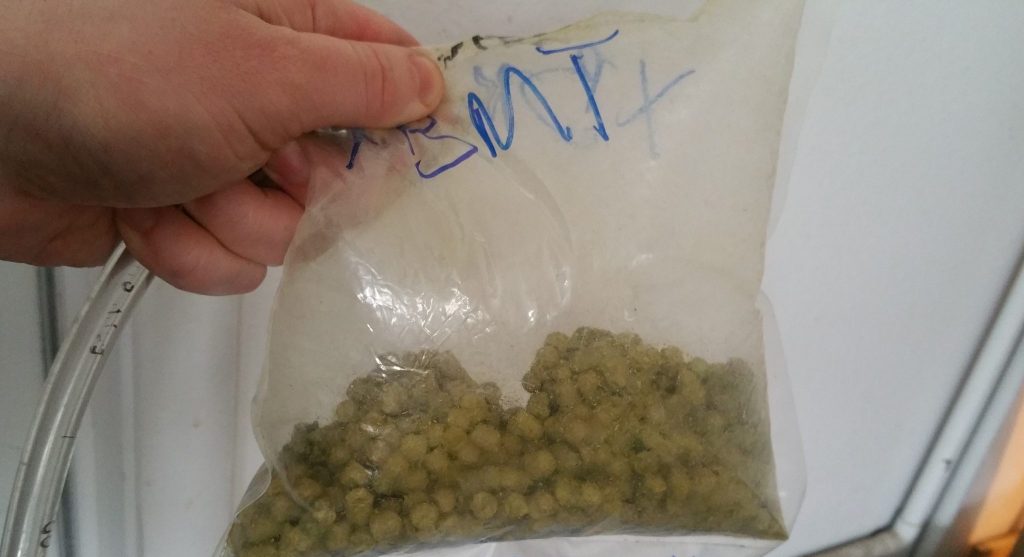
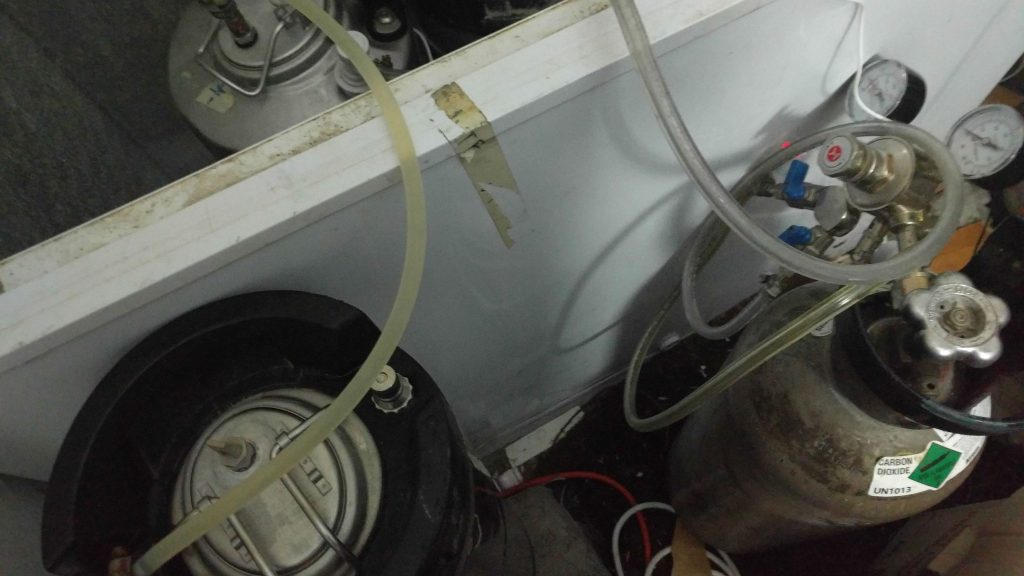
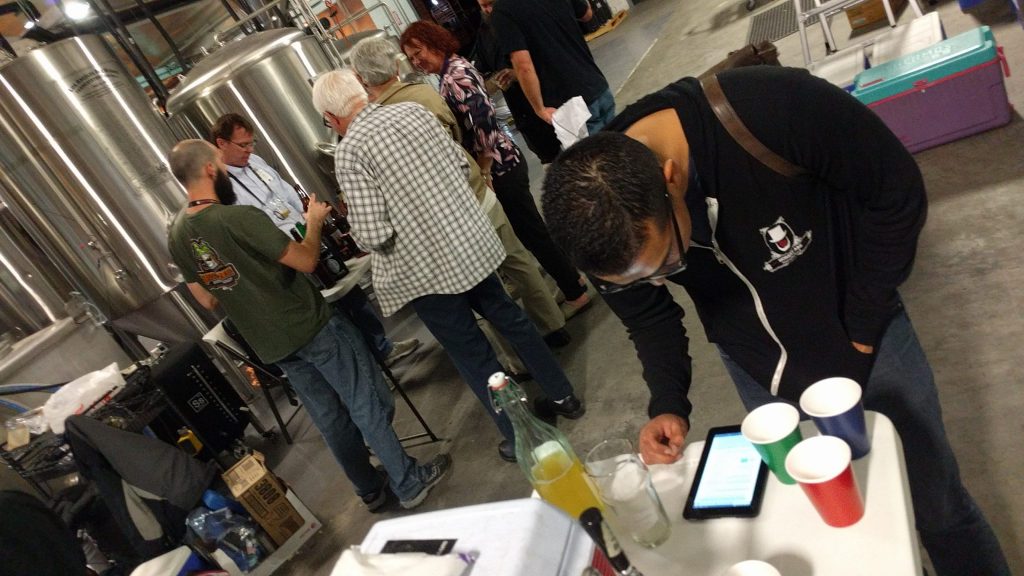










47 thoughts on “exBEERiment | Dry Hop At Yeast Pitch vs. Standard Dry Hop In Hazy IPA”
I’m surprised you used both whirlfloc and gelitan. A NE IPA has much more haziness and particulate in it than either of the IPAs you brewed. It’s possible no difference was experienced because you made a heavily dry hopped IPA, but not a NE IPA. Dealing with the flame out hops (I can’t tell exactly how/when they were added), may have also contributed.
I was just wondering why he used gelatin myself. If the whole point is to create an unfiltered style, why on Earth would you filter, especially since you admittedly don’t know the science behind it?
I suspect its because it’s part of his standrd beer making process.
whirlfloc etc in particular are part of brewers standard process, including mine.
the question then begs, does the haze contribute to the beer, or is it just a gimmick?
the answer is nobody really knows.
Totally agree. Fining the hazy beer left me scratching my head. And I think adding hops throughout fermentation (like every other day for example) makes a difference.
yeah me to, my understanding is you WANT the proteins to stay in the beer as yeast and hop oils bond to them leaving the flavour and aroma compounds in the beer. As you know im sure whirlfloc and gelatin are added to knock these proteins OUT of suspension . Apart form the juiciness factor of the style haze is also a signature element which has been completely lost by adding the above processes. Hmm was wondering why you didn’t add a large whirlpool hop addition as well?
I always LOVE you these XBMT’s but i think this one needs refining some more to get a better outcome of the style.
Cheers!
I suppose it depends on what you’re looking for in this xBmt. My purpose here was not just to make a good hazy NEIPA. I’m reasonably sure I can easily achieve that. Every IPA that I’ve ever made without whirlfloc and gelatin has been quite hazy.
What I am really interested in here is what causes the special haziness of an NEIPA. If you take a look at Marshall’s NEIPA xBmt using gelatin, the beer came out incredibly hazy. This leads me to hypothesize that there is something about NEIPAs that can cause a permanent haze that resists all fining. I thought that it might be caused by the dry hop timing which is what I wanted to test here. If I hadn’t used gelatin I probably would have made a hazy IPA anyway, which would have made it difficult to determine if the dry hop timing was the main cause of the permanent haze. Interestingly, one of these beers came out crystal clear which helps me get a better understanding of the factor or combination of factors that causes the haziness.
I’m not sure it matters but what made you go with the water profile you did? I’m curious if the notorious high chloride to sulfate ratio would lower dat P! Thanks for all you do!
I’ve seen conflicting reports on the correct ratio, but perhaps more chloride would have made a difference. Definitely a variable worth doing more xBmts on.
I’m also pretty surprised that you fined with gelatin – surely you’d have wanted all natural haze to remain? I wonder if it would have made the results a little clearer. You mention it was tasty – so besides the haze being missing, was it as juicy as a typical NEIPA despite the gelatin?
Thank you for clarifying this. In my opinion, the whole “biotransformation” lingo is clownshoes.
These aren’t mystical events occurring in the fermenter, just simple chemical reactions…
See this paper: http://onlinelibrary.wiley.com/doi/10.1111/j.1567-1364.2003.tb00138.x/full
Discussed on Scott Janish’s blog as well: http://scottjanish.com/examination-of-studies-hopping-methods-and-concepts-for-achieving-maximum-hop-aroma-and-flavor/
The clarity of this beer is baffling. I’ve made a NEIPA with pretty much the same grain bill only 80/20 with marris otter / oats and it was extremely hazy (https://goo.gl/photos/x6R5p4mwhcSztDtd7). I have one in the kegerator now that was made with wheat instead of oats and that too is very hazy (in fact I’d like it to be less so, it just doesn’t look appealing). The only difference I can see between our beers is maybe the amount of dry hopping (about 4-5oz / 5 gallons) and when I add them. I add them at high krausen usually 24-48 hours into fermentation. I used the same yeast as you too.
Any thoughts on the significant difference?
The author used gelitan to fine it after dry hopping, perhaps removing the very variable that they were looking for.
Even on their last NEIPA fining XBMT they didn’t get it fully clear. That’s what is so baffling. Even the “biotransformation” version is pretty clear.
I was reading somewhere recently about issues with Maris Otter for some years due to higher protein content (Caused by drought in some years), I can’t seem to find it now. But there are other reports of haze issues with Maris Otter:
https://www.homebrewersassociation.org/forum/index.php?topic=5175.30
I’ll try and track it down if I can.
I found in Gordon Stonog’s “Brewing Better Beer” where he said he’s had problems getting Munton’s Maris Otter to clear but never had a problem with Crisp. I used Crisp. Other than the link you posted above it’s the only real clarity problem I read about Maris Otter.
I wonder if gelatin fining affects the flavor. i personally never fine my neipa and after 2 months, if the keg hangs out long enough, it clears and the hoppiness is greatly diminished. ive even had success rolling the keg to bring those oils back in suspension and brought it back a bit. Not at all scientific obviously.
There has already been an XBMT on this https://brulosophy.com/2016/06/20/the-gelatin-effect-pt-6-gelatin-vs-nothing-in-a-ne-style-pale-ale-exbeeriment-results/
lost me at “fined with gelatin”
Was a whirlpool used for flameout hops? I have brewed the Treehouse Julius clone which only uses about 10% oats and my daughter routinely asks why I am drinking orange juice after dinner. I believe the whirlpool is an essential part of the haze forming process…don’t ask me the science behind it…but that and dry hopping at high krausen seemed to do the trick for me. It’s been in the keg two weeks and is still just as milky.
It looks like only 5 oz of hops were used in total (outside from bittering), is this correct? I think most people, when making NE IPAs, are using between 8-12 oz hops, so that could be one issue here. Not to beat a dead horse, but the use of fining agents is somewhat baffling as well, despite the previous exbeeriment. That beer had 15 oz hops for whirlpool/dry hop btw, so not apples to apples. Perhaps there is a threshold effect for the gelatin, as in you stripped out way more hop oils here than the previous exbeeriment?
What temp are the beers being tasted at? It might be hard to control in a group setting, but when fresh from the kegerator, aroma and flavor are clearly muted until the beer warms up to 50-55F in my experience.
>It looks like only 5 oz of hops were used in total (outside from bittering), is this correct?
There were 5 oz of dry hops added to each fermenter keg, so a total of 10oz of dry hops were used.
It looks like each batch got between 5-6 oz in TOTAL, is this correct? You say 10 oz like EACH batch got that amount, thus my confusion…
Also, can you clarify this sentence, “My fear of oxidation further compelled me to purge the headspace of both kegs with CO2… 10 times.”
You didn’t purge the “biotransformation” keg after FG was reached right?
wow, very interesting that the full-time dry hop beer clarified up well. I have brewed several IPAs of late, and I have noticed that sometimes they clear when I don’t expect them to and sometimes they are super murk-bombs when I don’t really expect them to be that murky. It is still somewhat of a mystery to me. I’ve also been noticing that a nice, clear west coast ipa can taste pretty awesome for quite awhile, and sometimes I actually prefer it to some of my ne ipas. lots more experimentation to try!
I suppose it is possible that when you add the dry hops right away, they get trapped under more yeast more quickly, as opposed to when you add them later. Or, maybe the higher pH of the early wort results in the beer clearing sooner as opposed to when hops are added once the pH is lower (after a few days of fermentation.) I don’t think you’ve done a pH difference IPA XBMT.
I wouldn’t have added any hop additions before flame out and certainly no whirlfloc or gelatin. One week in the keg is enough to drink then enjoy the benefits of a juicy New England IPA.
I agree. Odd13 recommends 100% flameout hops for NEIPAs. Takes about 8 oz per 5 gallons to get the bitterness you need. Then do a two stage dry hop – about 3 oz (per 5 gal) in primary and another 4+ oz (per 5 gal) in “secondary.” Also, Odd13 recommends avoiding classic NW hops (like centennial) from NEIPAs- instead focus on tropical fruit forward hops. I’ve found that those methods (in addition to London Ale III and the chloride/sulfate ratios) are the keys to making amazing NEIPAs
Wasted effort by fining. Should skip entirely on hot and cold side in this style. A few days cold crash to make transferring easier is sufficient. There should be no question why these beers were not that hazy. I agree you may have dropped the variable right out with the fining. My IPAs are softer and have a lot more hop aroma/flavor when fining agents are skipped entirely.
I’ve heard other professional brewers say that using gelatin as a fining agent specifically is not good for NE styles as it latches onto the hop oils and reduces haze and the flavor we’re looking for. If for some reason you need to clarify your hazy beer (I don’t with great results) then supposedly BioFine is the better choice.
Thanks for this one guys. I’ve never attempted a dry hop at pitch and always gone after primary ferment.
Interested to see this as a means to cut overall conditioning time for dry hopped beers as I could cut straight to cold crash rather than a 3 day pause @ 14 degrees C post ferment – potentially with a clearer beer at the end of things.
A little new at this so maybe this is a silly question but, doesn’t adding hops (which may have bacteria living on them) to the otherwize sanitized environment of the fermentor risk bacterial contamination of the beer? I understand that if you add them later on, the lower pH and higher EtOH levels inhibit bacterial growth, but at the start of fermentation conditions are right for bacteria to grow. Isn’t that why we’re all so obsessive about sanitation?
There are recent studies attesting that the lack of yeast floculation enhance hop flavor as yeast cells would not “pull” hop oils with then to the trub. Also high chloride rates tend to enhance yeast´s suspension.
I just would not use a 1/1 Chloride to sulfate rate, instead a 2/1 AND would not throw wirldfloc nor gelatine.
Maybe your lack of yeast suspension threw the amounts of bio-oils down through the threshold detection line…just an hypotesis.
Sir thanks for your interesting work!
I find all u do interesting and valuable.
I do agree with several people who commented that you should not have used gelatin. I used it once on a kegged IPA and it STRIPPED hop aroma and flavor bigtime.
My first NEIPA is freshly kegged now and is properly hoppy and “to style” hazewise. Even Pulpy. No finings of any kind. Homebrew club loved it yesterday.
lol finned with gelatin, this experiment just became entirely invalid
I usually don’t comment, but I have been making pretty regular batches of a similar style beer with nice haziness. I have experimented a bit with timing of the dry hop additions and the only caveat that I have to offer is that just after max fermentation seems to be the best time. I added one batch at peak fermentation and I believe a lot of hop material blew out and ended up not in the beer. Usually day 2 seems about right. My beers get going quickly and I use a goodly amount of starters.
im from the East Coast (NJ/PA) and we do it a little differently. We dry hop with half the hops during fermentation and the other half dry hop once fermentation is complete and we use Vermont Giga Yeast. Also we add most of hops at flameout and whirlpool for about 15-20 minutes. You should get most of the bitterness and flavor from adding hops at flameout. We also use flaked wheat along with flaked oats / golden promise and a bit of 2 row. Also we do not fine with gelatin or cold crash but do a secondary while adding the 2nd dry hop addition.
Brulosophy commenters are usually insightful and generous, but this experiment seemed to attract a lot of aleholes unfortunately.
For some reason they think they are here to teach how to make their special NEIPA. They completely miss the point of the experiment which is to isolate one variable to see if it makes a difference. All other changes (fining or not fining) are variables for other experiments.
listen to this experimental brewing podcast by Drew Beechum “Brew Files – Episode 10 – Getting Hazy with Ed Coffey of Ales of the Riverwards/Tired Hands fame who is a longtime expert on NE IPAs:
https://www.experimentalbrew.com/podcast/brew-files-episode-10-getting-hazy-ed
at 37:20 he is talking about adding whirlflock to the NE IPA. Which is to drop out some undesirable stuff from his beer and prevent beer from being too murky.
https://brulosophy.com/2016/06/20/the-gelatin-effect-pt-6-gelatin-vs-nothing-in-a-ne-style-pale-ale-exbeeriment-results/
Wilby Jackson points it out. The results were consistent with random guessing in the past xBmt mentioned. Not to say this is gospel but maybe gelatin fining isn’t a valid difference maker.
Deeper issue here, though. Confirmation bias validation. Yeah, I said it! Lol
A brewery in UK (Cloudwater) did the same experimentation with their NEIPA v4 and v5. The result was clearly the same. The conditionning dry hopped version was much hasier than the yeast pitched dry hopped beer.
Cloudwater DIPA v4/5 is an obvious comparison, effectively they were doing something similar to this xBmt with 2400-litre batches of each. v4 was dry-hopped during fermentation (split half at start, half halfway through) whilst v5 saw the hops go in after fermentation and during conditioning. The feedback was pretty consistent that people preferred the punchier taste of post-fermentation v5 to the rounder presentation of v4; the brewers’ favourite was a 80:20 blend of v5:v4. So now they’re adding 20% of the dry hops towards the end of fermentation, 40% three days into conditioning and 40% three days before crash cooling at the end of conditioning. Normally they dry hop for three days at a time, which again is a factor to play with – the evidence suggests that a lot of the big-name volatiles come out of the hops within 24h, but you need a bit longer to get a properly balanced flavour, presumably other things need longer – at the same time you don’t really want vegetation hanging around your beer any longer than you have to, there’s a good argument for the post-fermentation hops being pellets or even powder.
I would have to say Mash temp is a little low if the goal is to create a more turbid beer. Also I think the beer maybe over attenuated 1.010-1.012 is a good place to be for this style.
I was curious if you ever have issues with sucking trub up through the dip tube when transferring from a fermentation keg to a serving keg? Is a cold crash really good enough to create a solid yeast cake that wont get sucked through?
cold crash is the bomb. you’ll have no problems clogging the keg QD if you do even 12 hrs of cold crashing.
I’d assume the greatest difference would be in aroma. Was that evaluated?
I’m a little late commenting on this, but if you were going for a “milkshake” look, shouldn’t you skip the gelatin? I’ve always added it for clarity, so I’d assume that’s why you didn’t get quite the haze you were looking for.
Weirdly the comments didn’t show up until after I commented. I see my question was definitely addressed already.